-
 Bitcoin
Bitcoin $108,489.6704
1.13% -
 Ethereum
Ethereum $2,502.0528
2.92% -
 Tether USDt
Tether USDt $1.0002
0.00% -
 XRP
XRP $2.1941
0.51% -
 BNB
BNB $655.3375
1.00% -
 Solana
Solana $151.5977
1.27% -
 USDC
USDC $0.9999
0.00% -
 TRON
TRON $0.2768
0.32% -
 Dogecoin
Dogecoin $0.1676
2.86% -
 Cardano
Cardano $0.5675
0.98% -
 Hyperliquid
Hyperliquid $40.6109
7.48% -
 Bitcoin Cash
Bitcoin Cash $500.7746
2.09% -
 Sui
Sui $2.8328
2.03% -
 Chainlink
Chainlink $13.4452
1.26% -
 UNUS SED LEO
UNUS SED LEO $9.1623
0.39% -
 Avalanche
Avalanche $18.2267
2.24% -
 Stellar
Stellar $0.2382
0.00% -
 Toncoin
Toncoin $2.8885
1.68% -
 Shiba Inu
Shiba Inu $0.0...01159
0.91% -
 Litecoin
Litecoin $87.1827
0.88% -
 Hedera
Hedera $0.1511
2.90% -
 Monero
Monero $315.4992
-0.59% -
 Polkadot
Polkadot $3.4663
2.34% -
 Bitget Token
Bitget Token $4.6118
-0.65% -
 Dai
Dai $1.0000
-0.01% -
 Ethena USDe
Ethena USDe $1.0003
0.02% -
 Uniswap
Uniswap $7.2989
4.69% -
 Pepe
Pepe $0.0...01003
5.73% -
 Aave
Aave $275.5616
7.15% -
 Pi
Pi $0.5181
-2.49%
Why is NFT unique? Analyze the authentication mechanism of smart contracts
NFTs are unique digital assets authenticated through smart contracts on blockchain, ensuring indivisibility and secure ownership transfer.
May 08, 2025 at 02:42 am
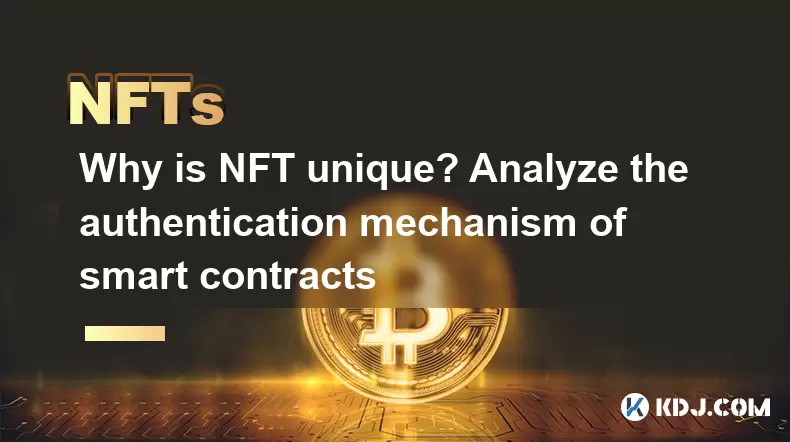
NFTs, or Non-Fungible Tokens, have gained significant attention in the cryptocurrency world due to their unique characteristics and the innovative use of blockchain technology. One of the key elements that make NFTs unique is their authentication mechanism through smart contracts. This article delves into the specifics of why NFTs are unique and how their authentication is managed through smart contracts.
The Uniqueness of NFTs
NFTs are unique because they represent digital assets that are indivisible and non-interchangeable. Unlike cryptocurrencies such as Bitcoin or Ethereum, where one unit is equivalent to another, each NFT has distinct information or attributes that set it apart. This uniqueness is encoded into the token itself, making it impossible to replicate or exchange on a one-to-one basis.
The uniqueness of NFTs is particularly valuable in digital art, collectibles, and gaming, where the provenance and ownership of a specific item are crucial. For instance, an artist can create a digital artwork and mint it as an NFT, ensuring that the artwork is one-of-a-kind and its ownership can be traced back to the creator.
Smart Contracts: The Backbone of NFT Authentication
The authentication mechanism of NFTs is primarily managed through smart contracts. Smart contracts are self-executing contracts with the terms of the agreement directly written into code. They run on blockchain platforms like Ethereum, which provides a decentralized and transparent environment for the execution of these contracts.
Smart contracts play a crucial role in ensuring the authenticity and ownership of NFTs. When an NFT is created, or "minted," a smart contract is deployed to manage the token's lifecycle. This includes defining the rules for ownership, transfer, and any royalties that may be due to the creator upon resale.
How Smart Contracts Authenticate NFTs
The process of authenticating NFTs through smart contracts involves several key steps:
Token Creation: When an NFT is minted, the smart contract generates a unique token ID and assigns it to the digital asset. This token ID is stored on the blockchain, ensuring that the NFT's existence and ownership can be verified at any time.
Ownership Verification: The smart contract maintains a record of the current owner of the NFT. When the NFT is transferred, the smart contract updates the ownership record, ensuring that only the legitimate owner can transfer or sell the token.
Transfer Mechanism: The smart contract includes functions that allow the owner to transfer the NFT to another address. These functions are designed to ensure that the transfer is executed securely and transparently on the blockchain.
Royalty Enforcement: Many NFT smart contracts include provisions for royalties, where a percentage of the sale price is automatically paid to the original creator upon resale. This is managed through the smart contract, ensuring that the creator continues to benefit from the NFT's value.
The Role of Blockchain in NFT Authentication
Blockchain technology is fundamental to the authentication of NFTs. The decentralized and immutable nature of blockchain ensures that once an NFT is minted and its details are recorded, they cannot be altered or deleted. This provides a high level of security and trust in the authenticity of the NFT.
The transparency of blockchain also allows anyone to verify the ownership and history of an NFT. By accessing the blockchain, users can trace the NFT back to its origin, ensuring that the token is genuine and has not been tampered with.
Practical Example: Minting an NFT
To illustrate how NFTs are authenticated through smart contracts, let's consider the process of minting an NFT on the Ethereum blockchain:
Prepare the Digital Asset: The first step is to prepare the digital asset that will be tokenized as an NFT. This could be a piece of digital art, a video, or any other digital content.
Choose a Platform: Select a platform that supports NFT creation, such as OpenSea or Rarible. These platforms provide user-friendly interfaces for minting NFTs.
Connect Wallet: Connect your Ethereum wallet to the platform. This wallet will be used to pay for the gas fees associated with minting the NFT.
Upload the Asset: Upload the digital asset to the platform and provide any necessary metadata, such as the title, description, and any other relevant information.
Set Up the Smart Contract: The platform will deploy a smart contract to mint the NFT. You may need to specify details such as the royalty percentage and any other conditions for the NFT.
Confirm and Mint: Review the details and confirm the minting process. The platform will execute the smart contract, minting the NFT and recording it on the Ethereum blockchain.
Verify Ownership: Once the NFT is minted, you can verify its ownership and details on the blockchain. The smart contract will have recorded the token ID and your address as the owner.
The Importance of Smart Contract Security
Given the critical role of smart contracts in NFT authentication, ensuring the security of these contracts is paramount. Vulnerabilities in smart contracts can lead to the loss of NFTs or unauthorized transfers. To mitigate these risks, developers must conduct thorough testing and audits of their smart contracts before deployment.
Additionally, users should be cautious when interacting with NFTs and smart contracts. Always verify the authenticity of the platform and the smart contract before minting or purchasing an NFT. Reputable platforms will have their smart contracts audited by third-party security firms, providing an additional layer of trust.
Frequently Asked Questions
Q: Can NFTs be replicated or duplicated?
A: No, NFTs cannot be replicated or duplicated because each NFT has a unique token ID that is recorded on the blockchain. Any attempt to create a duplicate would result in a new, distinct NFT with its own token ID.
Q: How can I verify the authenticity of an NFT?
A: To verify the authenticity of an NFT, you can check the blockchain record of the token. Most NFT platforms provide tools to view the token's history and ownership. Additionally, you can use blockchain explorers to trace the NFT back to its origin and ensure that the smart contract is legitimate.
Q: What happens if a smart contract used for an NFT is compromised?
A: If a smart contract is compromised, it could lead to unauthorized transfers or loss of the NFT. To mitigate this risk, it's essential to use reputable platforms and ensure that the smart contracts have been audited for security. If a compromise occurs, the affected NFTs may need to be frozen or recovered through the platform's support mechanisms.
Q: Can the ownership of an NFT be transferred without the owner's consent?
A: No, the ownership of an NFT cannot be transferred without the owner's consent. The smart contract governing the NFT includes functions that require the owner's approval for any transfer. Any attempt to transfer the NFT without the owner's consent would be invalid and not recognized on the blockchain.
Disclaimer:info@kdj.com
The information provided is not trading advice. kdj.com does not assume any responsibility for any investments made based on the information provided in this article. Cryptocurrencies are highly volatile and it is highly recommended that you invest with caution after thorough research!
If you believe that the content used on this website infringes your copyright, please contact us immediately (info@kdj.com) and we will delete it promptly.
- Ripple, Stablecoin, Adoption: RLUSD Leading the Charge
- 2025-06-30 14:30:12
- Bitcoin ETF, IBIT, and the Bull Flag: Is $144,000 on the Horizon?
- 2025-06-30 14:50:12
- Bitcoin, Passive Income, and a Bull Raise: Riding the Crypto Wave
- 2025-06-30 14:30:12
- Bitcoin, Personal Loans, and Omega 88: A New Era in Lending?
- 2025-06-30 15:09:14
- Saylor's Strategy: How MicroStrategy's Bitcoin Bet is Reshaping Finance
- 2025-06-30 14:52:14
- Metaplanet's Bitcoin Blitz: From Zero to Hero in the Corporate Treasury Race
- 2025-06-30 15:10:54
Related knowledge
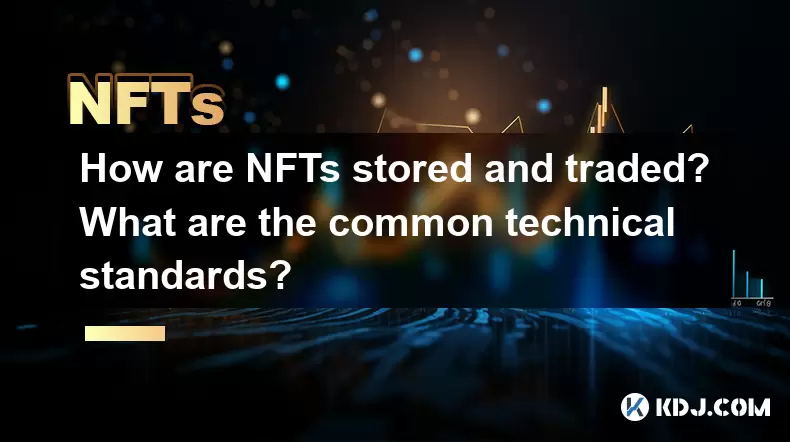
How are NFTs stored and traded? What are the common technical standards?
Jun 20,2025 at 08:49am
Understanding NFT Storage MechanismsNon-Fungible Tokens (NFTs) are digital assets that represent ownership of a unique item or piece of content, such as art, music, videos, or virtual real estate. The way NFTs are stored is crucial to their security and accessibility. Most NFTs are built on blockchain platforms like Ethereum, and the actual file—such as...
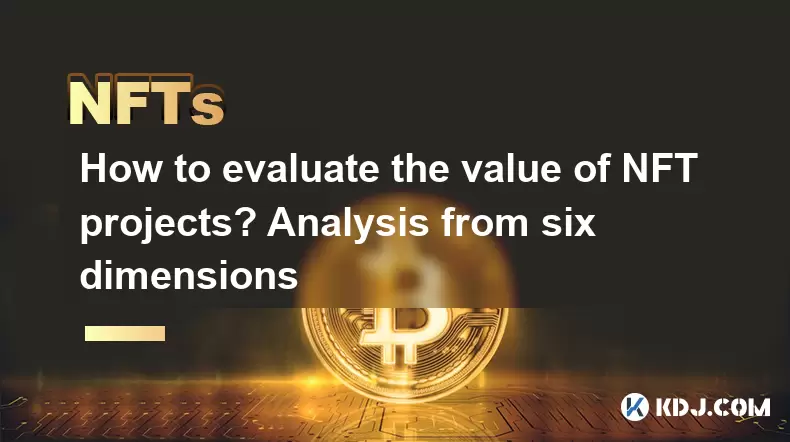
How to evaluate the value of NFT projects? Analysis from six dimensions
Jun 21,2025 at 02:28pm
1. Project Background and Team CredibilityEvaluating the value of NFT projects begins with a thorough understanding of its background and team composition. A credible project is usually backed by experienced developers, designers, and marketers who have a proven track record in blockchain or digital art industries. The presence of identifiable team memb...

What is the difference between NFT and digital collectibles? A must-read guide for beginners
Jun 19,2025 at 09:42pm
Understanding the Basics of NFTsNFTs, or Non-Fungible Tokens, are unique digital assets that represent ownership of a specific item or piece of content on the blockchain. Unlike cryptocurrencies such as Bitcoin or Ethereum, which are fungible and can be exchanged one-for-one, each NFT has distinct properties and cannot be directly replaced by another to...
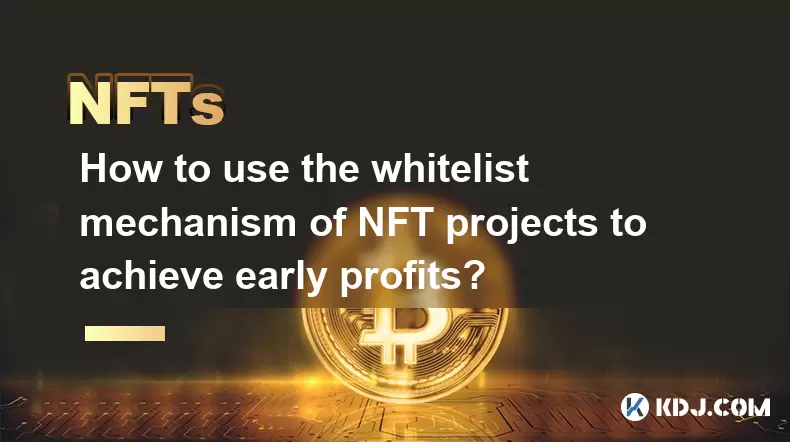
How to use the whitelist mechanism of NFT projects to achieve early profits?
Jun 21,2025 at 03:49am
Understanding the Whitelist Mechanism in NFT ProjectsThe whitelist mechanism is a popular strategy used by NFT project developers to allocate early access or exclusive minting rights to a select group of users. This system allows participants on the whitelist to mint NFTs before they are released to the general public, often at lower prices and with few...
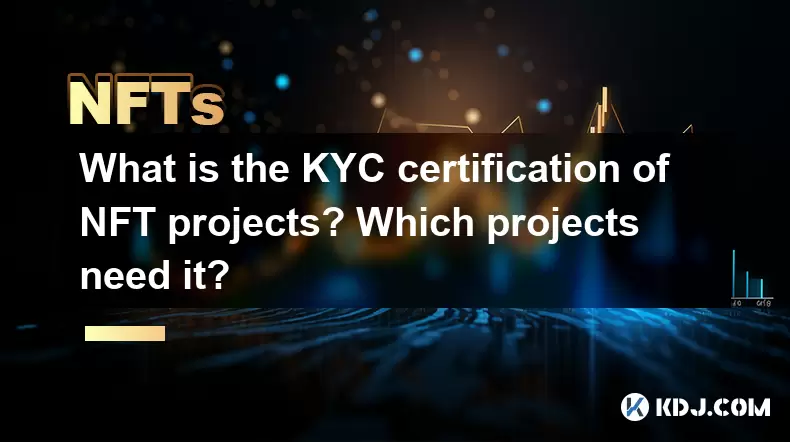
What is the KYC certification of NFT projects? Which projects need it?
Jun 21,2025 at 03:08pm
Understanding KYC Certification in the NFT SpaceKYC, or Know Your Customer, is a regulatory process used by businesses to verify the identity of their clients. In the context of NFT projects, KYC certification refers to the verification of user identities before they can participate in minting, trading, or selling NFTs on a platform. This practice is in...
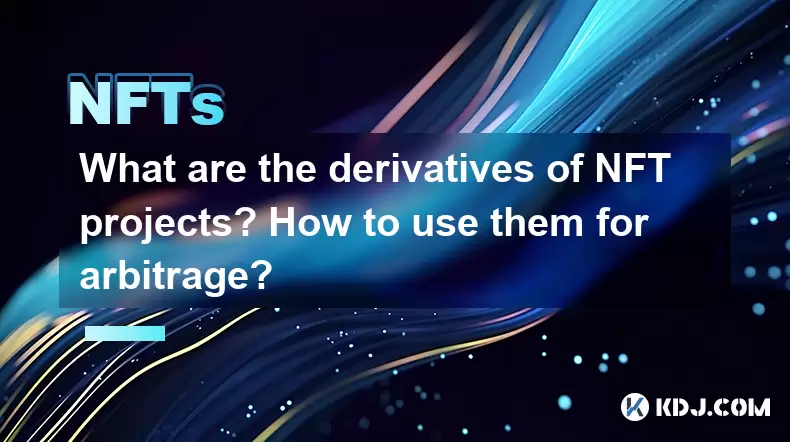
What are the derivatives of NFT projects? How to use them for arbitrage?
Jun 20,2025 at 06:14am
Understanding the Derivatives of NFT ProjectsNFTs, or non-fungible tokens, have evolved beyond simple digital collectibles. In recent years, derivatives of NFT projects have emerged as a new financial layer within the blockchain ecosystem. These derivatives are essentially financial instruments derived from the value and performance of underlying NFT as...

How are NFTs stored and traded? What are the common technical standards?
Jun 20,2025 at 08:49am
Understanding NFT Storage MechanismsNon-Fungible Tokens (NFTs) are digital assets that represent ownership of a unique item or piece of content, such as art, music, videos, or virtual real estate. The way NFTs are stored is crucial to their security and accessibility. Most NFTs are built on blockchain platforms like Ethereum, and the actual file—such as...

How to evaluate the value of NFT projects? Analysis from six dimensions
Jun 21,2025 at 02:28pm
1. Project Background and Team CredibilityEvaluating the value of NFT projects begins with a thorough understanding of its background and team composition. A credible project is usually backed by experienced developers, designers, and marketers who have a proven track record in blockchain or digital art industries. The presence of identifiable team memb...

What is the difference between NFT and digital collectibles? A must-read guide for beginners
Jun 19,2025 at 09:42pm
Understanding the Basics of NFTsNFTs, or Non-Fungible Tokens, are unique digital assets that represent ownership of a specific item or piece of content on the blockchain. Unlike cryptocurrencies such as Bitcoin or Ethereum, which are fungible and can be exchanged one-for-one, each NFT has distinct properties and cannot be directly replaced by another to...

How to use the whitelist mechanism of NFT projects to achieve early profits?
Jun 21,2025 at 03:49am
Understanding the Whitelist Mechanism in NFT ProjectsThe whitelist mechanism is a popular strategy used by NFT project developers to allocate early access or exclusive minting rights to a select group of users. This system allows participants on the whitelist to mint NFTs before they are released to the general public, often at lower prices and with few...

What is the KYC certification of NFT projects? Which projects need it?
Jun 21,2025 at 03:08pm
Understanding KYC Certification in the NFT SpaceKYC, or Know Your Customer, is a regulatory process used by businesses to verify the identity of their clients. In the context of NFT projects, KYC certification refers to the verification of user identities before they can participate in minting, trading, or selling NFTs on a platform. This practice is in...

What are the derivatives of NFT projects? How to use them for arbitrage?
Jun 20,2025 at 06:14am
Understanding the Derivatives of NFT ProjectsNFTs, or non-fungible tokens, have evolved beyond simple digital collectibles. In recent years, derivatives of NFT projects have emerged as a new financial layer within the blockchain ecosystem. These derivatives are essentially financial instruments derived from the value and performance of underlying NFT as...
See all articles

























































































